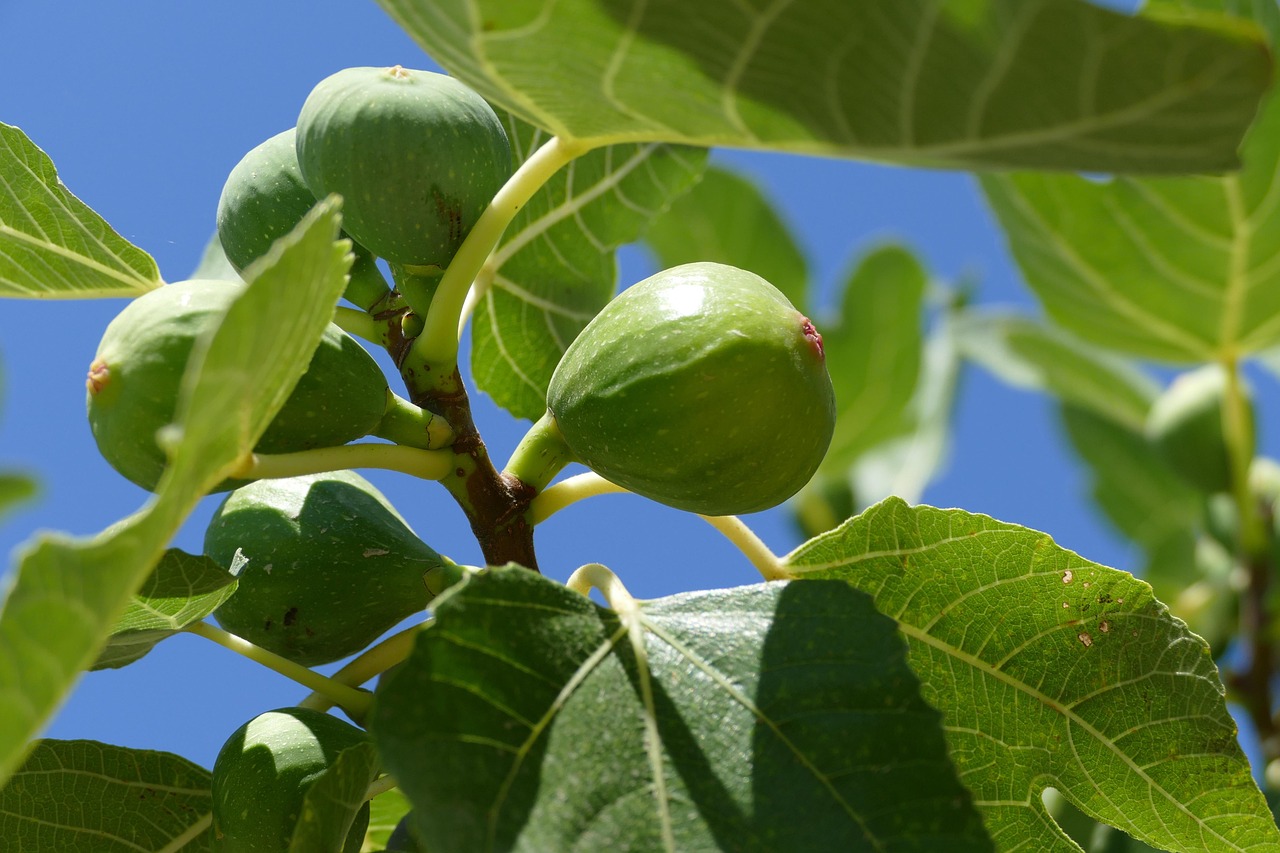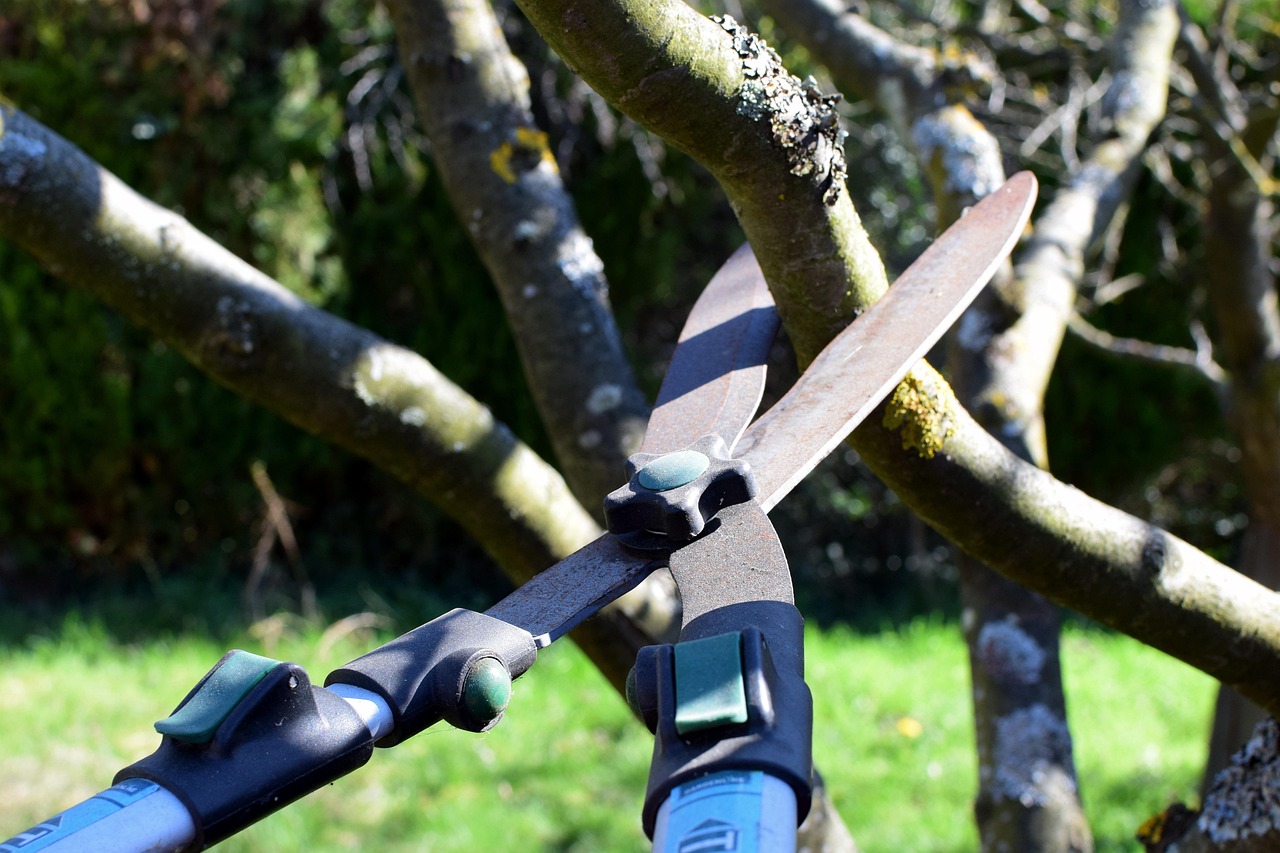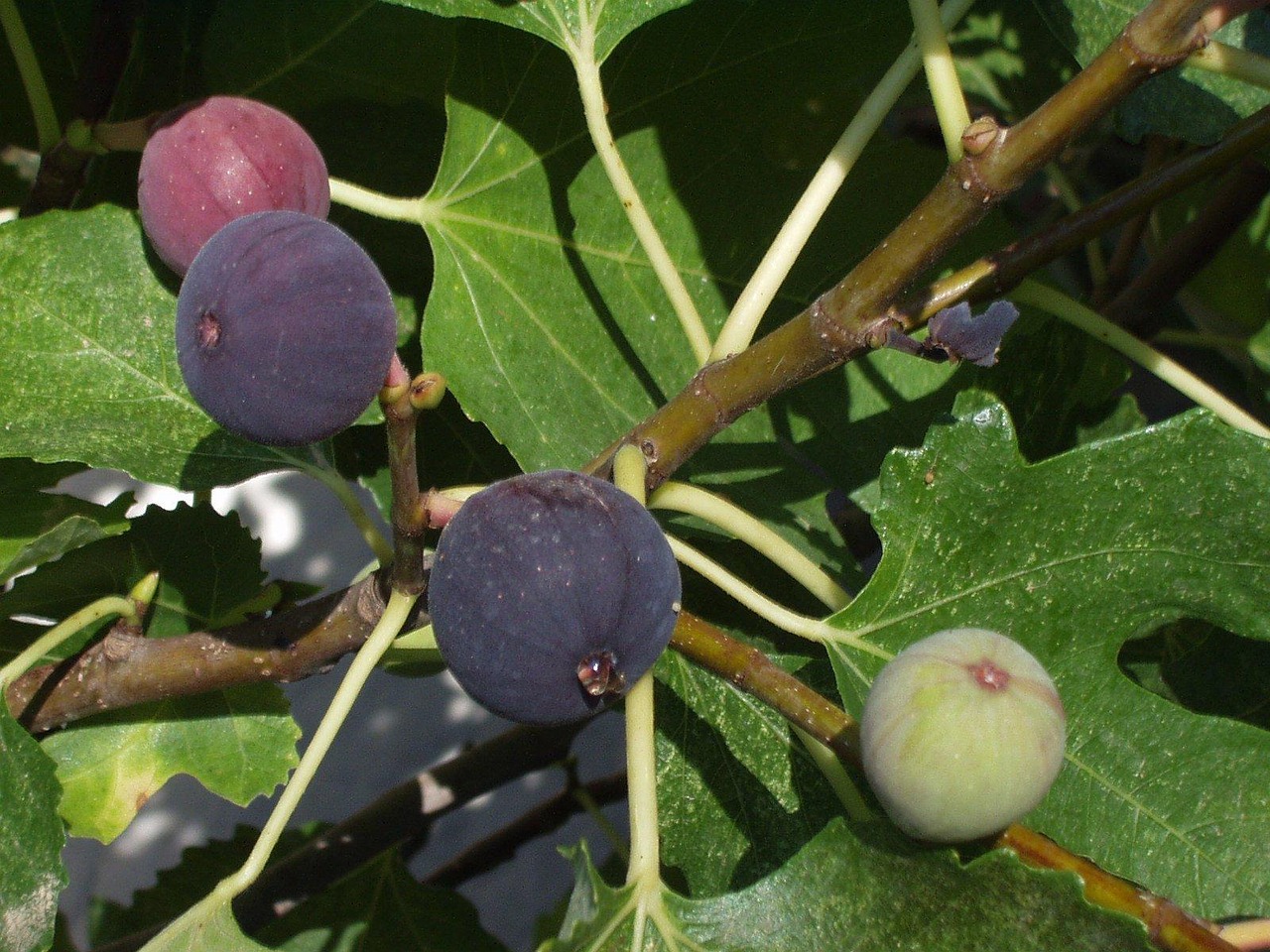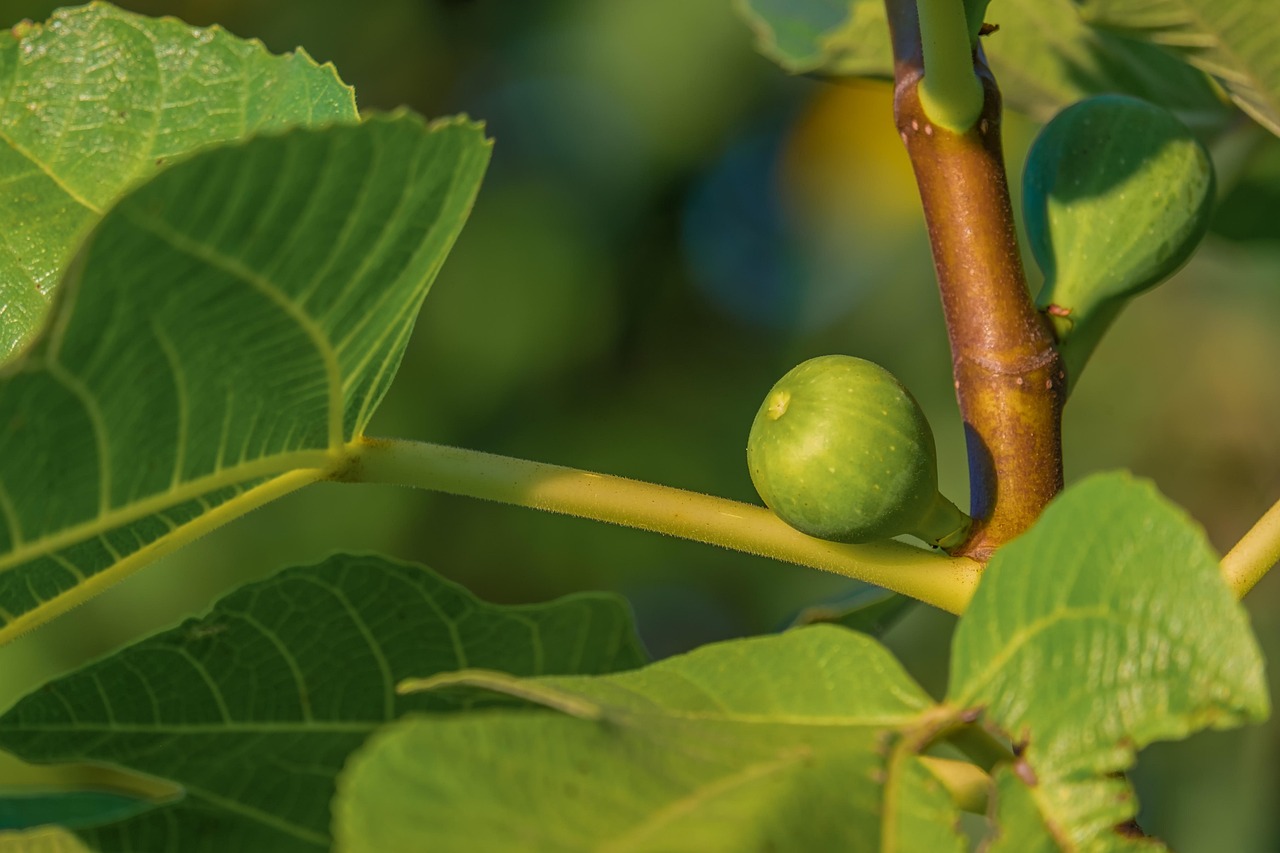Pruning fig trees in urban community gardens is essential for maintaining healthy growth, improving fruit yield, and managing tree size. It involves cutting back branches to enhance air circulation and sunlight exposure, which are crucial for fruit development.
Urban community gardens are increasingly popular as they allow residents to grow their own food, foster community relationships, and beautify neighborhoods. Fig trees are a favored choice for these gardens due to their delicious fruit and adaptability to various growing conditions. However, proper care is necessary to ensure that these trees thrive in an urban setting.

Pruning is a vital part of fig tree maintenance. It not only helps shape the tree but also encourages better fruit production. Without regular pruning, fig trees can become overgrown and unmanageable, leading to various issues such as poor fruit quality and increased susceptibility to disease.
Understanding Fig Tree Growth
Before delving into the specifics of pruning, it is important to understand how fig trees grow. Figs are deciduous trees that can reach heights of up to 30 feet or more, depending on the variety. They produce two types of wood: new growth from the current season and older wood from previous years. Understanding the difference between these types of wood is crucial for effective pruning.
Here are some key aspects of fig tree growth:

| Aspect | Description |
|---|---|
| Growth Habit | Figs grow in a bushy manner, developing multiple stems from the base. |
| Fruit Production | Figs typically produce fruit on new growth from the current year. |
| Flowering | Fig flowers are hidden inside the fruit, making them less visible. |
| Pruning Season | The best time to prune is late winter or early spring before new growth begins. |
Proper timing for pruning significantly impacts the health and productivity of fig trees. Pruning too early or too late can result in reduced fruit yields or damage to the tree. Therefore, understanding the growth cycle will help gardeners make informed decisions about when and how much to prune.
Benefits of Pruning Fig Trees
The benefits of pruning fig trees in urban community gardens go beyond just aesthetics. Here are some of the main advantages:
- Improved Air Circulation: Pruning helps open up the canopy, allowing air to flow freely. This reduces the risk of fungal diseases that thrive in stagnant air.
- Enhanced Sunlight Exposure: By removing excess branches, more sunlight reaches the remaining foliage and fruit, promoting better ripening and flavor.
- Increased Fruit Production: Pruning encourages the tree to focus its energy on producing fruit rather than maintaining unnecessary growth.
- Manageable Size: Regular pruning keeps fig trees at a manageable height, making harvesting easier for urban gardeners.
These benefits contribute not only to healthier trees but also to a more productive community garden overall. Gardeners will find that with proper pruning techniques, fig trees can yield abundant fruit while enhancing the garden’s beauty.

Essential Pruning Techniques
To effectively prune fig trees, gardeners should familiarize themselves with several essential techniques. These methods ensure that pruning is done safely and with minimal stress to the tree.
1. Thinning Cuts
This technique involves removing entire branches back to their origin. Thinning cuts help reduce overcrowding and allow for better air circulation and light penetration. It is crucial for maintaining a balanced structure in the tree.
2. Heading Cuts
Heading cuts involve cutting back a branch to a bud. This technique encourages new growth and can help manage the tree’s size. It is particularly useful for shaping young trees and encouraging a bushier growth habit.

3. Removal of Dead or Diseased Wood
Regularly inspecting fig trees for dead or diseased wood is essential. Removing these branches not only improves the tree’s health but also prevents potential infestations from pests and diseases.
4. Managing Height
In urban gardens where space is limited, controlling the height of fig trees is vital. Gardeners can achieve this by regularly trimming back the tallest branches during the pruning season.
By employing these techniques, gardeners can ensure their fig trees remain healthy, productive, and well-suited for urban environments. Each method plays a role in maintaining not just the individual tree but also the overall health of the community garden ecosystem.
Timing Your Pruning
Timing is a critical factor in successful fig tree pruning. The right timing can significantly impact the health and productivity of the tree. Understanding when to prune helps gardeners maximize the benefits of their efforts.
Optimal Pruning Seasons
The best time to prune fig trees generally falls in late winter to early spring. This timing allows gardeners to remove unwanted growth before the tree begins its active growth phase. Here are some specific considerations:
- Late Winter: Pruning during this period, typically from January to early March, helps prepare the tree for new growth. It is essential to prune before the buds swell and start to open.
- Early Spring: As the weather warms and signs of new growth appear, gardeners can make final adjustments to shape the tree and remove any damaged or dead branches.
- Avoiding Late Pruning: Pruning too late in the season can hinder fruit production. It may also expose the tree to stress during warmer months.
Environmental Considerations
Urban environments can present unique challenges for gardening and pruning. Factors such as microclimates, soil conditions, and urban heat effects can influence the best time to prune. Here are some environmental considerations:
- Microclimates: Different areas within a city may experience varying temperatures. Understanding local conditions can help determine the right pruning time.
- Soil Quality: Soil health impacts tree growth. Testing soil before pruning can provide insights into whether additional nutrients are required.
- Weather Conditions: Avoid pruning during wet weather, as this can increase the risk of fungal infections. Aim for dry days to minimize disease transmission.
Tools for Pruning Fig Trees
Having the right tools is essential for effective fig tree pruning. Proper equipment ensures that cuts are clean and minimizes stress on the tree. Here are some must-have tools for pruning:
- Pruning Shears: A pair of sharp, high-quality pruning shears is essential for making clean cuts on small branches.
- Loppers: For larger branches, loppers provide extra leverage and cutting power while reducing strain on your hands.
- Saw: A small pruning saw is useful for cutting thicker branches that cannot be handled by shears or loppers.
- Gloves: Protective gloves can help prevent cuts and scrapes while working with branches and foliage.
- Cleaning Supplies: Keeping tools clean and sanitized prevents disease transmission between trees. Use rubbing alcohol or bleach solution for cleaning.
Common Challenges in Fig Tree Pruning
While pruning is beneficial, it can also pose challenges if not done correctly. Awareness of potential issues can help gardeners navigate these challenges effectively.
Pest Infestation
Pests such as aphids and spider mites can become more prevalent after pruning due to increased sunlight exposure. Here are steps to mitigate pest issues:
- Regular Inspections: After pruning, monitor trees for any signs of pest activity.
- Natural Predators: Encourage beneficial insects like ladybugs that feed on common pests.
- Pesticides: If necessary, use organic pesticides as a last resort and follow label instructions carefully.
Disease Control
Fig trees are susceptible to various diseases, including bacterial leaf spot and root rot. To prevent disease after pruning, consider these practices:
- Cleansing Cuts: Always make clean cuts to reduce the risk of infection at pruning sites.
- Avoiding Overcrowding: Proper air circulation minimizes humidity around the tree, reducing disease risk.
- Fungicides: In cases of severe disease issues, applying fungicides may be necessary but should be used wisely.
The Role of Mulching and Fertilizing
After pruning, it is beneficial to enhance soil health through mulching and fertilizing. These practices support new growth and overall tree health.
Mulching Benefits
Applying mulch around the base of fig trees offers several benefits:
- Moisture Retention: Mulch helps retain soil moisture, which is vital for new growth after pruning.
- Temperature Regulation: It insulates roots against temperature fluctuations.
- Weed Suppression: A layer of mulch reduces competition from weeds that can drain resources from the fig tree.
Fertilization Guidelines
A balanced approach to fertilization will ensure fig trees receive adequate nutrients. Consider these guidelines:
- Nitrogen-Rich Fertilizer: Use nitrogen-rich fertilizers during the growing season to promote healthy leaf growth.
- Organic Options: Compost or well-rotted manure can provide essential nutrients while improving soil structure.
- Avoid Over-Fertilization: Too much fertilizer can lead to excessive vegetative growth at the expense of fruit production.
By understanding these factors related to timing, tools, potential challenges, and post-pruning care, urban gardeners can effectively manage their fig trees. This knowledge leads to healthier trees and a more productive community garden experience.
Pruning Techniques for Specific Fig Varieties
Different fig varieties may require tailored pruning techniques to optimize their growth and fruit production. Understanding the characteristics of various types of fig trees helps gardeners apply the most effective pruning methods.
Common Fig Varieties
Here are some of the most popular fig varieties found in urban gardens along with their specific pruning needs:
| Fig Variety | Characteristics | Pruning Tips |
|---|---|---|
| Brown Turkey | Produces sweet, medium-sized figs; drought-tolerant. | Light pruning in spring; remove dead or weak wood. |
| Celeste | Known for its sweet flavor and small size; hardy in cooler climates. | Shape young trees with heading cuts; thin older growth. |
| Mission | Dark purple to black figs with a rich taste; produces heavily. | Prune after harvest; focus on thinning to improve air circulation. |
| Kadota | Light green figs that are excellent for drying; vigorous growth. | Prune to control height and shape; remove suckers regularly. |
Understanding the unique characteristics of each variety allows gardeners to adjust their pruning techniques accordingly. This not only enhances the tree’s health but also maximizes fruit yield and quality.
Advanced Pruning Methods
For experienced gardeners, advanced pruning methods can be utilized to further enhance fig tree growth and production. These methods may involve more complex techniques and considerations.
Crown Reduction
Crown reduction is a technique used to lower the height of the tree while maintaining its overall shape. This method is particularly useful in urban settings where space is limited. Here are key steps to achieve crown reduction:
- Selective Cutting: Choose branches that are overgrown or obstructing light from reaching other parts of the tree.
- Avoid Topping: Do not cut off the top of the tree indiscriminately, as this can lead to weak growth and potential disease issues.
- Maintain Balance: Ensure that the tree maintains a balanced appearance after cuts are made, promoting even growth.
Espalier Pruning
Espalier pruning involves training the fig tree to grow flat against a wall or trellis. This method is not only space-efficient but also creates an attractive focal point in a garden. Follow these guidelines for espalier pruning:
- Select a Suitable Variety: Choose a variety that responds well to training, such as Brown Turkey or Celeste.
- Create a Framework: Install a trellis or support structure before planting the tree.
- Regular Trimming: As the tree grows, regularly trim branches to maintain the desired shape and encourage lateral growth.
Understanding Tree Responses to Pruning
It is essential for gardeners to understand how fig trees respond to pruning. This knowledge helps in making informed decisions about when and how much to prune.
Growth Patterns After Pruning
After pruning, fig trees exhibit specific growth patterns. Here are some typical responses:
- Burst of New Growth: Following pruning, expect a surge of new shoots and leaves as the tree redirects energy to remaining buds.
- Fruit Development: Trees may produce fruit earlier than usual due to increased sunlight exposure and air circulation.
- Potential Stress: If too much foliage is removed, the tree may experience stress, leading to reduced fruit yield in the following season.
Signs of Healthy Recovery
A healthy fig tree will show several signs of recovery post-pruning. Gardeners should look for the following indicators:
- New Leaf Growth: The emergence of new leaves within a few weeks is a positive sign that the tree is recovering well.
- Budding Fruits: Flower buds appearing on new growth indicate that the tree is ready for fruit production.
- No Wilting or Yellowing: Leaves should remain vibrant green without signs of wilting or yellowing, which could indicate stress or disease.
Sustainable Practices for Community Gardens
Sustainability plays a crucial role in urban community gardens. Implementing eco-friendly practices during fig tree pruning helps maintain environmental health while fostering a sense of community responsibility.
Composting Pruning Waste
Instead of discarding pruned branches and leaves, consider composting them. Composting offers multiple benefits:
- Nutrient Recycling: Decomposed organic matter enriches soil and supports healthy plant growth.
- Waste Reduction: Composting reduces landfill waste and promotes sustainable gardening practices.
Encouraging Biodiversity
Maintaining biodiversity in community gardens enhances ecological balance. Here are ways to promote biodiversity alongside fig tree cultivation:
- Diverse Planting: Include a variety of plants around fig trees to attract beneficial insects and pollinators.
- Pest Management Strategies: Use natural pest deterrents and companion planting to reduce reliance on chemical pesticides.
Sustainable practices not only benefit individual gardeners but also contribute positively to the entire community garden ecosystem, ensuring long-term success and health for all plants involved.
Maintaining Healthy Fig Trees Year-Round
In addition to proper pruning, year-round maintenance is crucial for keeping fig trees healthy in urban community gardens. These practices ensure that trees not only survive but thrive, producing abundant fruit and enhancing the beauty of the garden.
Watering Practices
Effective watering practices are essential for fig tree health. Proper hydration supports growth and fruit production, especially during dry spells. Here are some tips for watering fig trees:
- Deep Watering: Water deeply and infrequently to encourage strong root development. Aim for about 1 inch of water per week, adjusting based on rainfall.
- Soil Moisture Monitoring: Check soil moisture regularly. Use a finger or moisture meter to determine if the soil is dry an inch below the surface before watering.
- Mulching: As previously mentioned, applying mulch helps retain soil moisture and regulate temperature, benefiting fig trees during warm months.
Seasonal Fertilization
In addition to the initial fertilization after pruning, seasonal applications of nutrients can support ongoing growth. Here are guidelines for fertilizing fig trees throughout the year:
- Spring Application: Apply a balanced fertilizer as new growth begins to support healthy leaf and fruit development.
- Mid-Summer Boost: Consider a light application of fertilizer in mid-summer if growth appears sluggish or if trees show signs of nutrient deficiency.
- Fall Considerations: Avoid fertilizing late in the season to allow trees to prepare for dormancy without stimulating new growth.
Pest and Disease Management
Monitoring for pests and diseases is an ongoing task for gardeners. Early detection can prevent infestations from becoming severe. Here are some strategies for effective management:
- Regular Inspections: Inspect leaves and branches regularly for signs of pests or disease, such as discoloration, wilting, or unusual spots.
- Organic Pest Control: Utilize insecticidal soaps or neem oil as organic options to manage pest populations effectively without harming beneficial insects.
- Crop Rotation: If possible, rotate planting locations of fig trees in community gardens to reduce soil-borne diseases.
Community Engagement and Education
Engaging the community in maintaining fig trees can enhance the gardening experience and foster a sense of shared responsibility. Here are ways to promote community involvement:
- Workshops: Organize workshops to educate members about fig tree care, including pruning techniques and pest management strategies.
- Volunteer Days: Schedule regular volunteer days where community members can come together to prune, water, and maintain the garden.
- Sharing Knowledge: Encourage experienced gardeners to mentor newcomers, sharing their insights and fostering a collaborative environment.
Final Thoughts
Pruning fig trees in urban community gardens is a rewarding endeavor that enhances both tree health and community relationships. By understanding the specific needs of different fig varieties, employing effective pruning techniques, and maintaining proper care throughout the year, gardeners can create thriving ecosystems that yield delicious fruits while beautifying their surroundings.
Sustainable practices, such as composting and encouraging biodiversity, not only benefit individual gardeners but also contribute to the overall health of the community garden. As urban areas continue to grow, these green spaces will play an increasingly vital role in promoting food security and environmental stewardship.
By fostering a culture of shared learning and responsibility, urban community gardens can become vibrant hubs of activity. With every pruning season, gardeners have the opportunity to cultivate not just fig trees but also friendships, knowledge, and a sense of belonging within their communities.
The journey of nurturing fig trees is filled with learning opportunities and rewards. As gardeners continue to refine their skills and share their passion for sustainable gardening, they contribute to a healthier planet and a more connected community.
